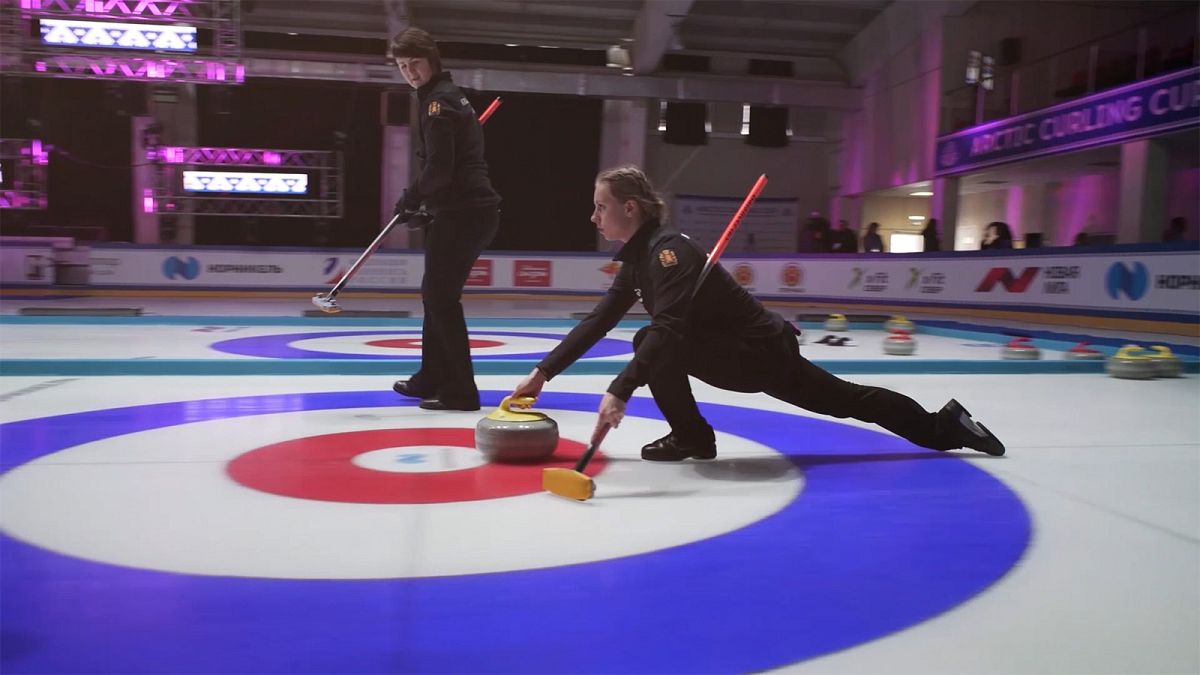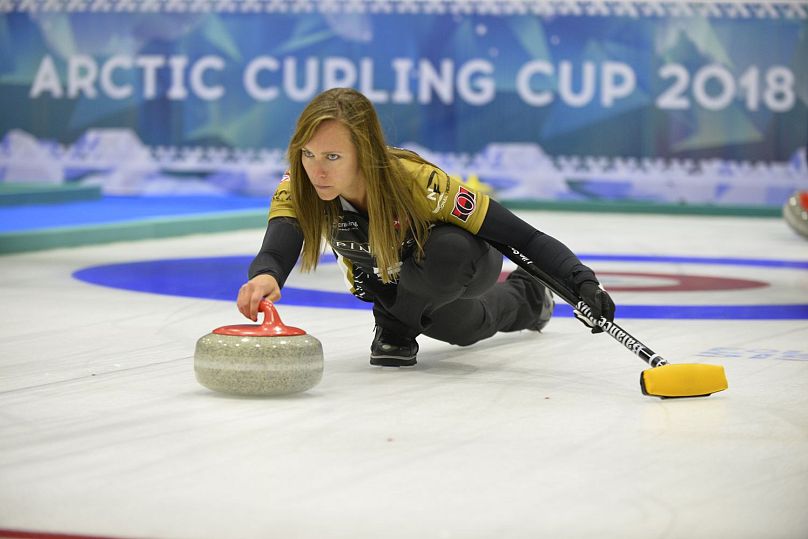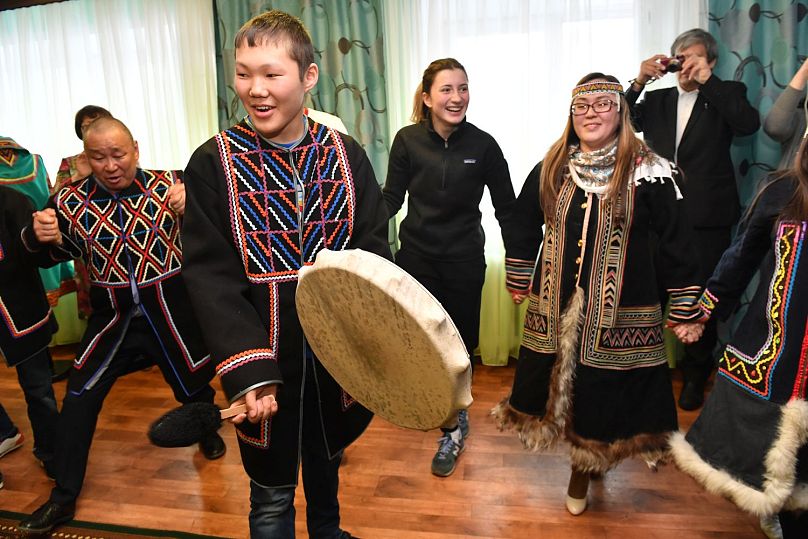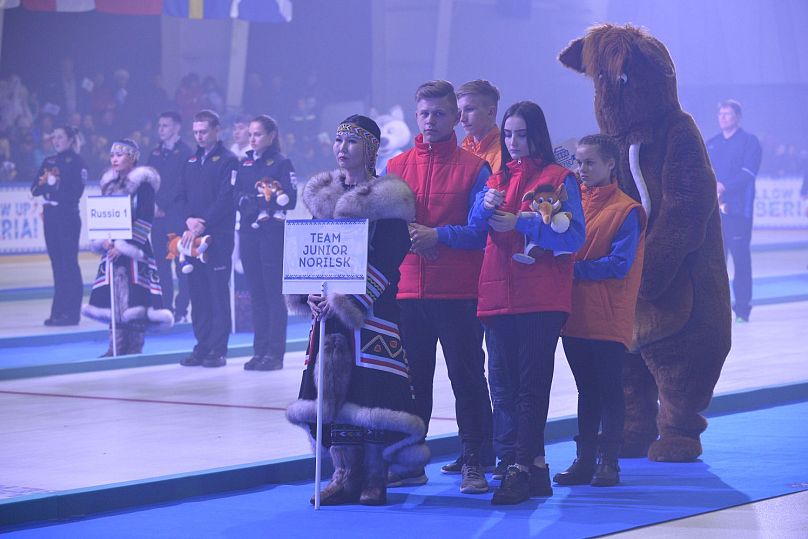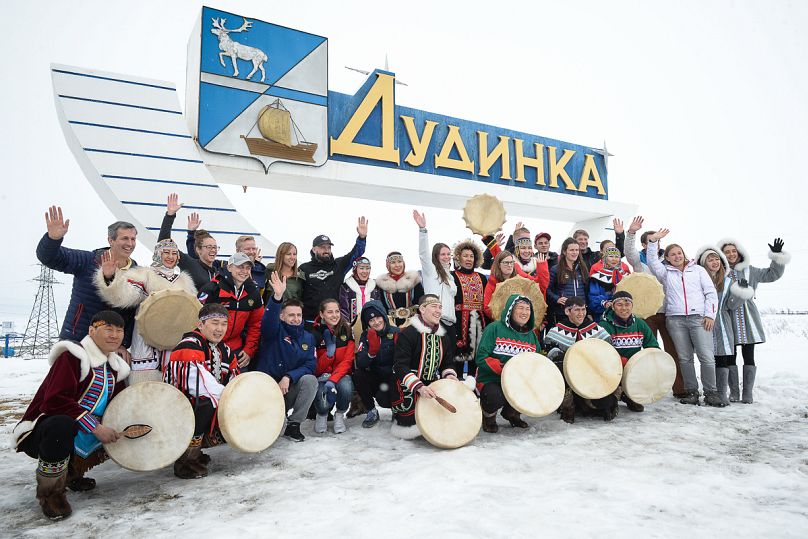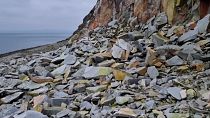It started with a hammer and ended with a pummelling: a nail-biting tie-breaker. Two mixed doubles teams faced off in a dead heat on ice in the final of the World Curling Tour (WCT) Arctic Curling Cup in Dudinka, Russia.
On one side: Swedish world champion Niklas Edin and marquee-name Canadian player Rachel Homan. On the other: Scotland’s local heroes Duncan Menzies and Gina Aitken — whose homeland is the birthplace of the strategic winter sport.
With both teams rivalling each other point for point, end to end, the pivotal moment came in the seventh, as the finalists equalised at 6-6.
In the last end, with the Scots’ stones dangerously close to the button, Homan threw with laser-like precision. Her rock landed in the centre of the house, tallying the winning point and a 7-6 final score for Canada/Sweden, the most geographically mixed pairing of the mixed championship.
Destination Dudinka
The event in the small polar town of Dudinka saw ten teams face off, between 24-27 May. Pro players from Russia, Canada, Sweden, Czech Republic, Finland, Switzerland and Scotland competed at the 300-capacity Taymyr Ice Arena — which opened in 2014 with support from Curling Cup general partner Nornickel.
As they arrived, the curling stars were greeted by native tribespeople. The Nganasan women stood out with their classic beaded headdresses. Such indigenous locals, among them the Dolgans as well, are known for their reindeer herding, fishing and hunting heritage and skills — all of which have played a role in the area’s cuisine.
A side benefit for the participants was a chance to explore Taymyr, in northern Russia’s stunning and snowy Krasnoyarsk Region of Siberia. International players were treated to a visit to the House of Taymyr Folk Art, where they learned about exotic, time-honoured crafts.
They also toured the Taymyr Regional Museum, which boasts among its relics the most complete remains of a mammoth found in over a century.
“My favourite part of the trip so far is meeting the huskies,” said Menzies of the living wildlife, for which the peninsula is famous. Teammate Aitken marvelled: “It was the first time I’d ever seen a reindeer.”
For athletes from the general region, Maria Komarova and Daniil Goryachev of one of Russia’s three teams, it was an opportunity to earn a bronze in a keenly fought contest against Czechs Zuzana Hájková and Tomas Paul.
An early indicator of the Russia-2 team's bronze glory against their opponents was their 4-0 score after just two ends.
Still, Komarova and Goryachev, who are World Mixed Doubles silver medalists, kept their eye on the prize. And in the seventh and final end of the third place match, they cast their stones and swept their way to a whopping 8-3 victory.
Hip and Fast-Paced
The annual mixed doubles bonspiel is the last leg of the World Curling Tour. The Cup was launched in 2016 as a test event at the Taymyr Ice Arena, showcasing Russian men’s teams. In 2017, the northernmost competition expanded, welcoming international women’s groups, among them Olympic athletes.
Today, the WCT Arctic Curling Cup is the world’s only top-level curling tournament outside the Arctic Circle.
The event certainly leads in the new co-ed doubles curling genre, which one USA Curling Association official has described as the traditional winter sport’s ‘hip, fast-paced cousin.’
Mixed doubles was introduced in the Olympic Winter Games for the first time in February 2018 in Pyeongchang, South Korea. Its rules allow for two players and eight ends, in contrast to the usual four players and ten ends.
In the past decade, curling’s overall popularity has spiked worldwide — sweeping past other Winter Olympics sports such as luge, and even recently trumping global interest in figure skating.
This year’s generous Arctic Curling Cup purse is just one indicator of the sport’s popularity in the region. A total of $30,000 was awarded to the 2018 winners — one of the highest value prizes among mixed doubles heats in the WCT’s current season.
New Champions, Customary Cuisine
This year’s bonspiel made history while also looking to the future. It was the first to include Junior WCT Arctic Curling Cup matches between youth teams from Dudinka and Norilsk.
During the year, these young players from inclusive academic institutions train at Dudinka Curling School. The competition was a chance for them to see their favourite global athletes and show them what they’ve got, on the sheet.
The kids also hosted their mentors for a tea at the boarding school in Dudinka. There, they sampled some blinis — traditional Russian buckwheat flour pancakes, which are well-known the world over.
Other local culinary offerings bear the mark of the nomadic native tribes, who cook everything from fresh venison to whitefish, such as savoury nelma and muksun (which foreign athletes would be hard-pressed to find in their home countries). One popular dish, sugudai is a sort of Siberian sushi: delicate fish is served chopped, raw and seasoned with onion, salt crystals and pepper.
‘Rocks’ Around the World
All in all, 20 top curlers from seven countries participated in 24 heats at the Arctic Curling Cup. After exclamations of “hurry!” “sweep!” “hard” and “line!” echoed through the Taymyr Ice Arena in various languages, it was time to celebrate the best players of this ‘chess on ice’ tournament.
At the closing event, an eight-piece drum and bag pipe band, dressed in Scottish kilts, captivated the crowd. Junior players were then given their honours, with Taymyr mascot Zhenya the mammoth in attendance. Finally, medals were awarded to the winning pro teams: Canada/Sweden, Scotland and Russia-2.
Players will go on to travel all around the globe on the renowned World Curling Tour, through April 2019. They will then return to Dudinka, where the international curling season will once again wrap up at the next riveting WCT Arctic Curling Cup.
